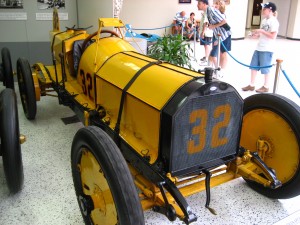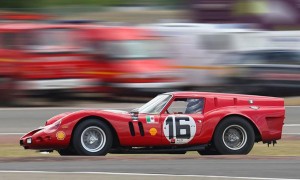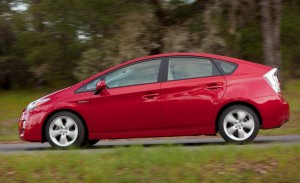In 1911, Ray Harroun entered a car in the inaugural Indianapolis 500 automobile race.
Though primitive by today’s standards (the car averaged roughly 75 mph over the course of the 500 mile race), it was a massively controversial vehicle in its day.
Why?
Because it was the first car in history to be equipped with a rearview mirror. This put Mr. Harroun at a considerable advantage, because his car was the only one that did not have a passenger mechanic on board. Eliminating an onboard mechanic represented a significant weight savings, which Harroun used to his advantage, winning the race by just over half a mile.
Three years later, automobile manufacturers started putting review mirrors on cars available to the public.
Since then, racing has continued to improve the breed. In 1961, Giotti Bizzarrini combined his engineering talent with Piero Drogo, a car body specialist. Enbracing Kammback design, the result of their creation was a very unique looking Ferrari racing car. The long tail section of the car minimized air resistance, allowing for higher speeds.
In 2011, Toyota introduced the first widely-available hybrid electric car, aimed at the mass market. Look closely at the profile, and you will see echoes of the Kammback principle. Instead of winning races, the slippery aerodynamics help the Prius compete against the wind in order to deliver more miles per gallon.
Today, there are many pieces of automotive technologies so mundane to us that we take them for granted. Anti-lock brakes. Disc brakes. Rearview mirrors. How many of us drive cars without rearview mirrors?
Step back and look at the infrastructure as a service landscape. Private industry is our race team. They are working constantly, pouring effort, energy, and capital into improving the breed. We are the fortunate auto manufacturer on the receiving end of the trickle-down effect. Technologies that we fantasized about twenty years ago are available at our fingertips.
Though cutting edge for higher education, adopting IaaS and DevOps has proven its mettle in the stiffest competition. Let us step forward confidently and learn from our racing team, figuring out how to operationalize the use of these technologies in our environment.
And for those of you interested in learning more about technologies that we take for granted whose roots are in racing, please explore this interesting article.

